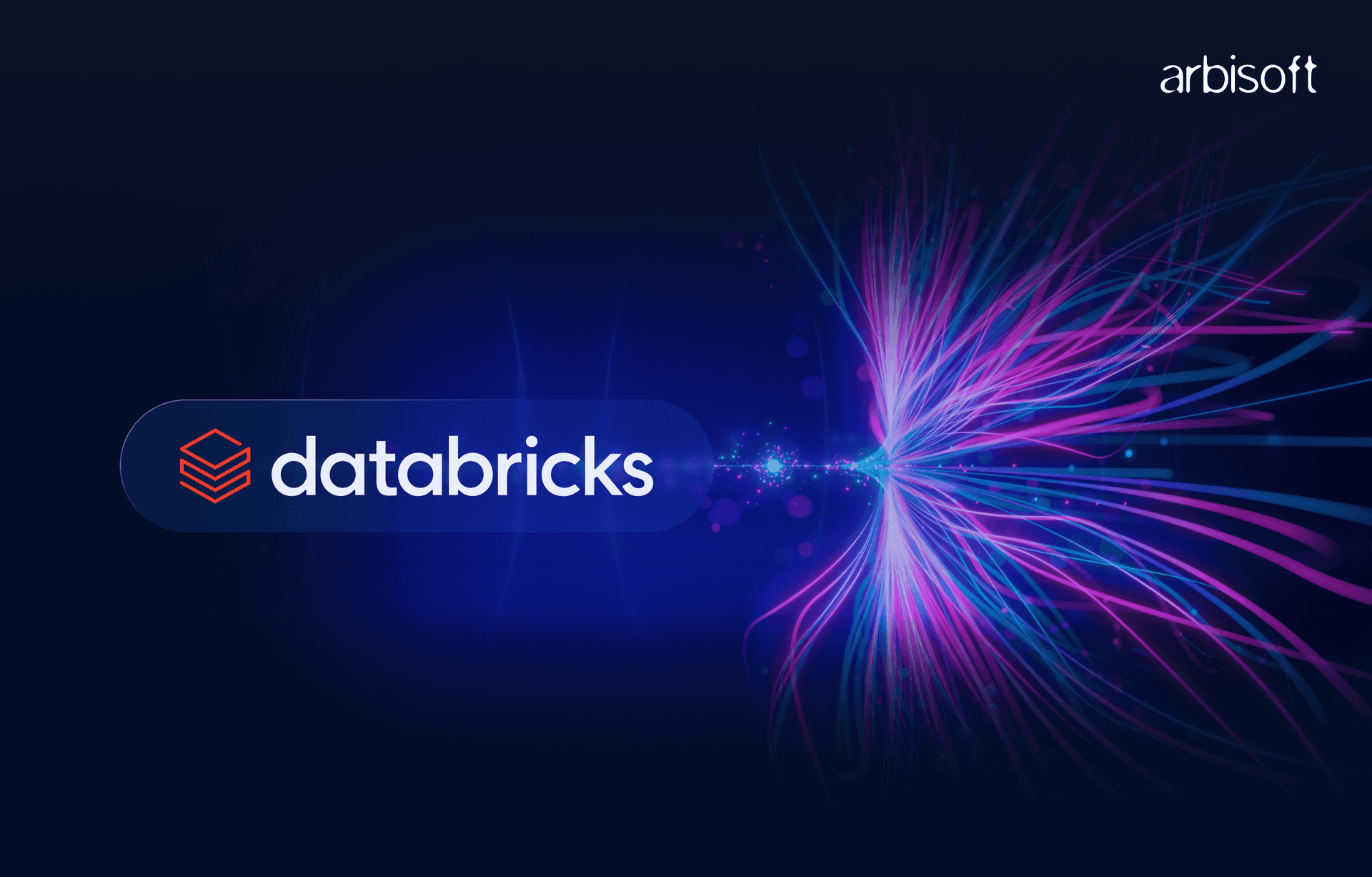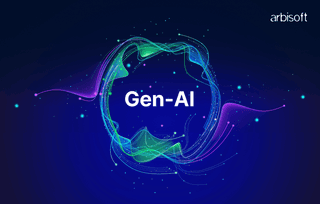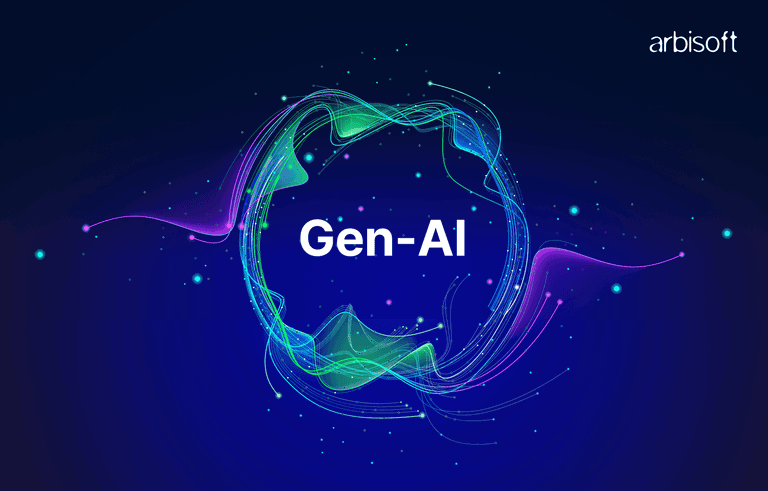We put excellence, value and quality above all - and it shows




A Technology Partnership That Goes Beyond Code

“Arbisoft has been my most trusted technology partner for now over 15 years. Arbisoft has very unique methods of recruiting and training, and the results demonstrate that. They have great teams, great positive attitudes and great communication.”
Key Benefits of Databricks: How Databricks Solution Engineers Can Optimize Data Pipelines and Accelerate Performance

Performance

These days, companies that can handle and make sense of large volumes of data quickly have a real edge. Databricks makes that easier by offering a single, user-friendly platform that helps engineers streamline data workflows and achieve better performance, whether they’re dealing with real-time streams or batch jobs. In this post, we’ll take a closer look at some of Databricks’ biggest advantages, especially around optimizing pipelines and speeding up data processing.
The Databricks Advantage: Foundation of Data Excellence
Many industry leaders like Adobe and Square, along with thousands of other data-driven companies, have turned to Databricks to efficiently extract strategic business decisions from data. Databricks is a unified analytics platform designed to build, test, deploy, and maintain large-scale data and AI solutions.
Data Intelligence Platform
Databricks is a modern data intelligence platform designed to go beyond analytics, infusing automation, reasoning, and decision-making into every layer of the data stack. Built-in GenAI tools like Mosaic AI and Genie, it enables smarter insights, adaptive workflows, and AI-native applications on enterprise data. Combined with governance features like Unity Catalog, Databricks transforms raw data into intelligent, secure, and actionable knowledge across teams.
Simplified Governance with Unity Catalog
Keeping track of who can access what data is critical, especially at scale. Unity Catalog helps with this by centralizing access control, tracking data usage, and offering clear visibility into data lineage. Its “set it once” permissions model ensures consistent policies across all workspaces, cutting down administrative headaches.
Scalable, Distributed Processing
Databricks has a powerful distributed compute engine based on Apache Spark at its core. This architecture enables Databricks to process large quantities of data in parallel across multiple clusters of machines. Solution engineers can design pipelines that intelligently distribute workloads to maximize throughput and minimize processing time.
Pipeline Optimization: Building a Solid Foundation
Every well-optimized pipeline starts with a strong foundation, and that’s exactly what Databricks offers. Its tools help turn traditional data lakes into high-performing, reliable platforms built for scale.

ACID Properties
Traditional data lakes suffer from data inconsistencies. Delta Lake solves this problem by providing ACID (Atomicity, Consistency, Isolation, Durability) transactions, ensuring data consistency, especially during concurrent operations.
Schema Evolution
Data schemas evolve over time as business needs change. Delta Lake supports schema evolution, allowing schema changes without breaking existing pipelines.
Time Travel
There is always a risk of data loss and inconsistencies. Delta Lake’s time travel feature ensures that every operation is automatically versioned. Time travel allows engineers to query older versions of data for audits, debugging, or rollbacks.
Data Compaction
Data compaction improves performance by merging small files into larger ones. Z-ordering and file pruning further enhance query speed by reducing the amount of data that needs to be scanned.
Delta Live Tables (DLT): Automation Meets Intelligence
Delta Live Tables is a paradigm shift in building and managing ETL/ELT pipelines. DLT is a framework for building high-performance, reliable, and testable pipelines. You simply define the desired data transformations, and DLT handles the underlying orchestration, infrastructure, and data flow.

Declarative Processing
It simplifies complex ETL logic with built-in functions, significantly reducing code and supporting SCD Type 1 and Type 2 without requiring deep technical knowledge.
Scalability
DLT uses Databricks’ enhanced autoscaling, which optimizes cluster utilization by automatically allocating resources based on workloads.
Data Quality
DLT uses constraints and expectations to drop or quarantine invalid data, ensuring data integrity downstream. Engineers can define and monitor these constraints and expectations to maintain high data quality.
Lineage Tracking
DLT provides automatic lineage tracking, offering a clear visual understanding of how data flows through the pipeline — a crucial capability for debugging and optimization.
Real-Time and Batch Processing: Bridging the Gap
With Databricks, you don’t need separate systems for batch and streaming needs. It gives engineers the tools to handle both side by side, using a single, unified setup.

Structured Streaming Plus Batch Processing
Databricks uses Delta Lake to support both live data and scheduled jobs in one place. Whether you're handling live logs, user clicks, or sensor signals, the platform lets you feed that data directly into Delta tables. Later, the same tables can be used for batch jobs — no duplication, no extra effort. Plus, built-in checkpointing ensures fault tolerance.
Autoloader
Pulling fresh files from cloud storage doesn’t have to be complicated. Autoloader does it automatically, detecting and loading new data as it arrives. Instead of repeatedly scanning folders, it reacts to notifications (like from AWS SQS), saving time. It even adapts when data structures change, so engineers don’t have to fix things manually every time the schema updates.
If you want a real-world breakdown of how this works in practice, check out our guide on Using Databricks Auto Loader for Efficient Data Ingestion on the Delta Lake Platform. It covers how Auto Loader simplifies large-scale file ingestion while reducing errors and operational overhead.
Real-Time and Historical Workloads, Optimized Together
You can send live data straight to dashboards for instant visibility while running batch jobs on the same information to spot patterns, generate reports, or train ML models. Everything works in sync — no need to maintain multiple pipelines or worry about inconsistencies.
Real-World Impact: J.B. Hunt’s Supply Chain Transformation with Databricks
J.B. Hunt, a leading logistics provider, significantly upgraded its freight operations by adopting the Databricks Lakehouse Platform. Moving away from outdated infrastructure, the company implemented a unified data strategy that boosted efficiency across supply chains and improved driver performance and safety. With tools like Immuta and Carrier 360, they gained better control over data access and delivered advanced freight analytics — all while reducing infrastructure expenses and supporting scalable AI innovation.
(Inspired by: Databricks – Big Book of Data Engineering)

Jobs and Workflows: Orchestration at Scale
As organizations scale their data and AI efforts, managing workflows becomes critical. Databricks simplifies orchestration with built-in features to schedule, run, and monitor jobs efficiently.
Smarter, Reusable Workflows
Engineers can pass parameters to jobs at runtime, making workflows dynamic and reusable across different data sources — no need for hard-coded logic.
Adaptive Pipelines
Databricks supports generating tasks on the fly based on upstream results or external inputs. This allows pipelines to respond to changing data in real time.
Multi-Task Workflows
Workflows can include multiple tasks arranged as a Directed Acyclic Graph (DAG). Tasks can run in parallel or in sequence, giving engineers precise control. Everything can be managed through the UI or the REST API.
Cloud-Native Schedulers
With cloud-native schedulers, you can trigger jobs by time or event — no external tools required. Customize retries, time zones, alerts, and more to fit your workflow.
Logging and Monitoring
Databricks logs everything: cluster activity, job runs, notebook outputs — you name it. These logs, combined with real-time dashboards, help engineers debug, trace errors, and fine-tune performance.
Performance Acceleration: Supercharging Data Workloads
Building robust pipelines is only part of the challenge — getting timely insights is equally critical. Databricks offers a suite of powerful tools that deliver game-changing performance improvements.

Core Building Blocks of Query Performance in Databricks
Optimization starts with understanding how Spark and Databricks process your queries.
Why Some Queries Are Faster: Efficient queries read less data, avoid shuffles, and take advantage of greater parallelism.
Computation Complexity: Heavy joins, nested subqueries, or UDFs can slow execution.
Bytes Read/Write: High I/O usually means you're pulling too much data or scanning irrelevant files.
File Access: Accessing 10,000 small files versus 10 well-optimized files makes a massive difference. Features like liquid clustering in Delta Lake continuously reshape data layout in the background, improving query performance without manual partitioning.
Parallelism: More partitions = more tasks = better CPU utilization (if balanced correctly).
Cluster Sizing: Bigger isn’t always better. Use autoscaling and right-sizing for optimal results.
Photon Engine: The Speed Booster

Speed matters, and Photon is Databricks’ turbo button. This super-fast engine, built in C++, processes data 3 to 10 times faster than older systems. It handles data in smart chunks, making tasks like sorting or filtering lightning quick. Techniques like dynamic joins and data skipping ensure it only touches what’s needed, saving valuable time. In-memory caching keeps frequently accessed data close for instant retrieval. One startup, with a massive 500 GB machine learning job, saw costs drop by 65%, allowing them to update models daily instead of weekly.
On top of that, tools like the Catalyst Optimizer refine your queries to run more efficiently, while the Spark UI helps pinpoint slowdowns, like a mechanic diagnosing a car. With smart adjustments like salting to balance workloads, your data flows at top speed.
Query Optimization Techniques

Getting fast results from big data isn’t just about throwing more power at the problem — it’s about working smarter. Databricks tackles this by reshaping your queries before they run. Think of the Catalyst Optimizer as a savvy editor: it trims unnecessary details, pushes filters to the front, and simplifies expressions so the system only processes what truly matters. Meanwhile, the cost-based optimizer acts like a strategist, using insights about data sizes and structures to choose the most efficient path, deciding which join methods save the most time and which filters to apply first.
But the real magic happens during execution. Adaptive Query Execution (AQE) allows Databricks to monitor data flow and adjust strategies on the fly. If it detects an issue — like an oversized join or uneven partitions — it tweaks the plan mid-course, changing joins or repartitioning data to keep things smooth. Features like partition pruning and data skipping let the system skip over irrelevant data, scanning only what’s necessary. And with well-sized files, it balances parallel processing and scan speed without bottlenecks.
Databricks also handles heavy shuffle and memory management behind the scenes. It minimizes data movement through smart repartitioning, uses broadcast joins to reduce shuffling, and carefully manages memory to avoid costly disk spills. When dealing with skewed data, where a few keys dominate, it evens out the load with techniques like salting. Altogether, it’s a finely tuned system that quietly optimizes every step, so your big data queries run fast and efficiently without extra effort.
Understanding Query Behavior in Databricks
Squeezing the best performance from your queries starts with understanding what’s happening under the hood. Databricks provides powerful tools for this. The Spark UI works like a dashboard, showing how each stage performs, task durations, and how much data shuffling or memory they use. If you see stages flagged red or notice ballooning shuffle sizes, it’s often a sign of data skew or retries.
For deeper analysis, the Query Profile Viewer lets you inspect the execution plan down to each operator. This helps identify costly steps, like heavy SortMergeJoins or unnecessary full-table scans. While auto-scaling adjusts resources based on workload, fine-tuning your min/max worker counts helps avoid cold starts or slow scaling. And keep an eye on memory — spill events (when data moves to disk) often mean your executors need better configuration.
Caching frequently accessed data is another secret weapon. Using df.cache() or CACHE TABLE speeds up repeated queries by keeping data close, but be selective — caching large, unused datasets wastes memory. Lastly, while user-defined functions (UDFs) provide custom logic, they disable Catalyst’s optimizations. Stick to native SQL functions like when(), substring(), or date_add() Whenever possible to keep queries fast and efficient.
Final Thoughts on Building Better Data Pipelines
Databricks takes the complexity out of data engineering. Whether you’re managing real-time streams or large-scale batch jobs, it provides the flexibility and performance engineers need to move faster. With features like Delta Lake for reliability, Photon for speed, and intuitive monitoring tools, teams can focus on building better pipelines without getting bogged down in infrastructure challenges. Built-in scalability and automation help reduce operational overhead, making it easier to adapt as data needs grow. For teams working with large volumes of data, Databricks offers a practical, efficient way to turn raw inputs into meaningful outcomes. If you’re looking to simplify workflows and get more from your data, Databricks is a strong place to start.
























